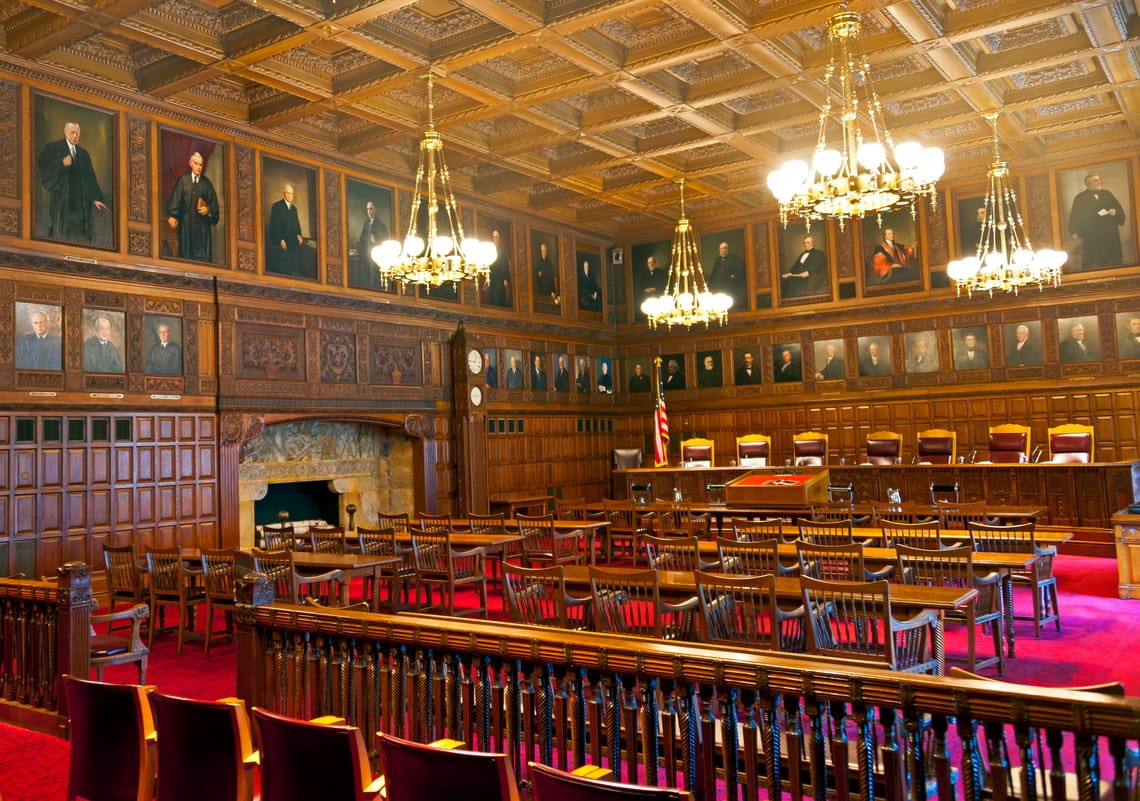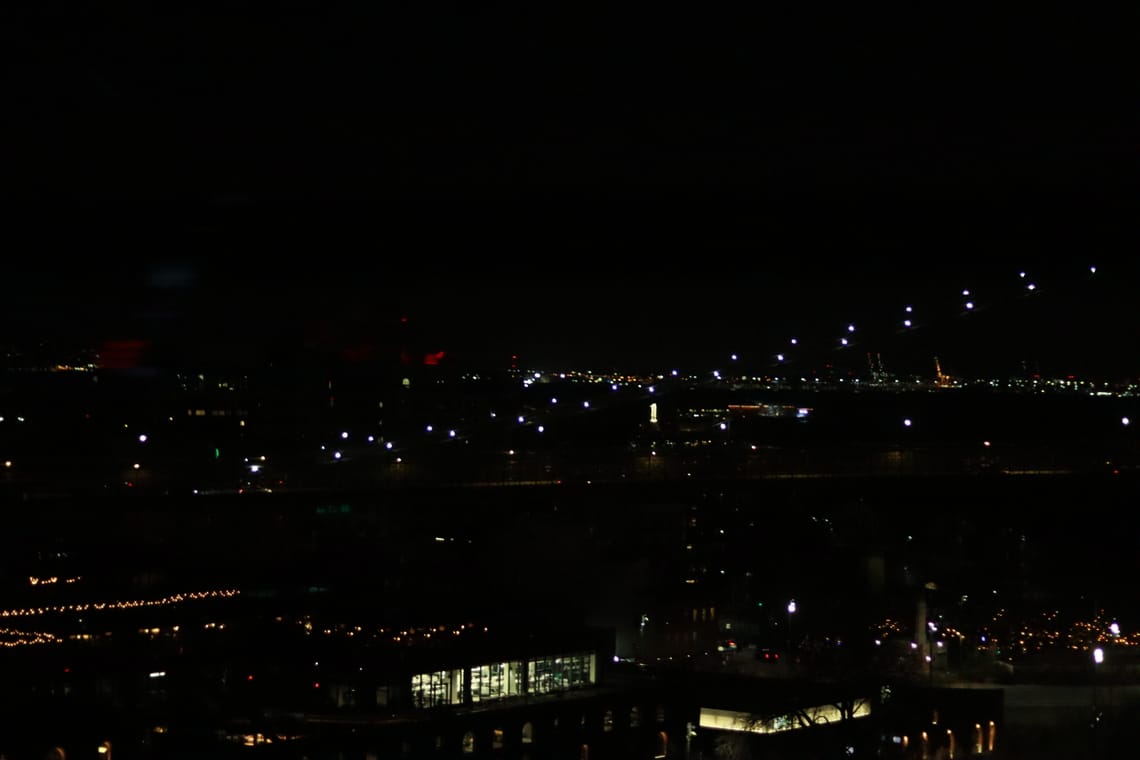Ohio, alongside Indiana and West Virginia, challenges the Environmental Protection Agency's emissions regulations in the U.S. Supreme Court, highlighting the contentious battle between states and federal environmental oversight, with potential implications for American air quality standards.
On February 21, 2024, Ohio, alongside Indiana and West Virginia, took to the U.S. Supreme Court arguing against the Environmental Protection Agency’s emissions regulations, named the “Good Neighbor Provision.” The court decision, having yet to be made, holds the power to potentially halt these regulations, which play an instrumental facet in the Clean Air Act, which addresses American air quality issues.
However, disputes about national air quality standards in America have a checkered history, with states and the federal government often grappling over environmental regulation. Beginning in 2015, these conflicts were heightened when the EPA, under the Obama administration, began issuing their new air-quality standards for ozone within 23 “upwind” states. These states were thought to emit air pollutants that traveled long distances and negatively impacted the air quality in “downwind” states. Accordingly, the National Ambient Air Quality Standards (NAAQS) for ozone emission was strengthened within these states; the revised standards reduced the allowable concentration of ground-level ozone from 75 parts per billion (ppb) over an 8-hour period to 70 ppb. Furthermore, federal clean air laws required that states with these unhealthy emission levels develop reduction plans often known as State Implementation Plans or SIPs. . SIPs mandated states to extensively detail how they would achieve reaching the revised ozone standards in the long term, which included identifying sources of ozone pollution and detailing the measurements they would take to reduce emissions and monitor air quality.
Despite the harsher regulations, many states were initially supportive, and increased efforts to assess compliance, develop implementation plans, and adapt to regulatory changes. This agreement, nonetheless, proved to be short lived when the EPA rejected 21 State Implementation Plans, which sparked frustration over the states. However, instead of allowing these states to revise their plans, the EPA, last February, published a cross-state air pollution Federal Implementation Plan (FIP), known as the Federal Implementation Plan Addressing Regional Ozone Transport, to achieve these requisite reductions. This multi-state plan was based on a combined analysis of the upwind state's contributions. With this, many states sought to challenge this policy to the courts, while others, including Idaho and Louisiana, sought to work with the EPA to create a solution that met both sides' needs. Despite the negative legal response and efforts regarding collaboration, the EPA, ignoring the vehement protests of the 23 states, continued its plan to finalize this regulation, and as such, completed its federal implementation plan in early June.
The new plan, as characterized in the Plaintiff's official complaint, was “ambitious,” imposing emission reduction requirements on new industrial stationary sources (newly constructed facilities or sources of pollution). Regulations on such sources had remained dormant for decades and as such, were groundbreaking. The new program imposed regulations on power plants so harsh that, according to Plaintiffs, would require them “to choose between steep penalties, changing their operations, or shutting down.” However, with the harsh nature of this plan came legal consequences, and as described by the Plaintiffs, “the Sixth, Ninth, and Tenth Circuits joined the Fifth in concluding that the States had a strong case that the EPA’s state-plan disapprovals were illegal.” Eventually, the negative legal outcomes led the EPA to, in early July of last year, begin enacting interim rules in several states which halted the application of the federal plan in states such as Arkansas, Kentucky, Louisiana, Mississippi, Missouri, and Texas. Nonetheless, Ohio, Indiana, and West Virginia filed a petition in the D.C. Circuit Court challenging the federal plan, which was set to become effective on August 4, 2023.
Their petition, however, after facing a divided panel of the D.C. Circuit Court of Appeals, was denied — Judge Justin Walker indicated during this case that “he would have granted the challengers’ request.”
The challengers then came to the Supreme Court, where they argued that the ineffectiveness of the plan - it “now applies to only 11 of the 23 States it was supposed to cover … [and] reaches less than 25% of the emissions it set out to regulate” - deems it unsound. They further exemplified this, where they detail that, “after exempting a dozen States, the federal plan regulates only (1) about 11% of the emissions from electric-generating units it intended to regulate and (2) about 40% of emissions from industrial sources it intended to regulate.” This, according to U.S. Steel, one of the Plaintiffs, exemplifies that the plan “is legally and factually unsound and likely to be vacated in its entirety. It was built on the premise that [the] EPA could impose the plan on every state that contributes significantly to downwind ozone concentrations. This was a foundation of sand that has now washed away.” With the plan's lack of success, they, therefore, find it to be an unnecessary burden that only introduces new complexities and challenges.
The EPA, however, would have known this explained by the Plaintiffs if they had listened to the legal decisions of circuit courts as argued by Plaintiffs. Indeed “every circuit … stayed the EPA’s action,” with some doing so “before the federal plan was even finalized.” Cooperation with the states during the creation of the plan rather than undermining the state's claims and bypassing a collaborative approach would have further enabled them to foresee these challenges. Their unwillingness to collaborate established by Plaintiffs, meant that the EPA “failed to engage in the reasoned decision making required under the Administrative Procedure Act.” Specifically, the EPA assumed all of the 23 states agreed with this plan, and in doing so, imposed the plan without adequate consideration for state-level feedback which limited state autonomy. This paired with the harm caused by the “time, money, and other resources [states would have to spend to] comply with [the] unlawful federal mandate” thus, deems the law unconstitutional.
In response to these claims, the EPA “urges the justices to stay out of the dispute” and that the “decisions by other courts of appeals putting the EPA’s disapproval of state plans on hold do not undermine the federal plan.” They also contend that the Supreme Court should play no role in making decisions on the Clean Air Act because courts are only allowed to review objections to a rule when they were first raised during the public comment period.
While both sides continue to argue, the decisions weigh on the Supreme Court and have the possibility to have a large impact on state residents and the states themselves.
Sienna Woodley
Sienna is an intern at Chen Law Journal and aspires to become an environmental litigator. Outside of academics, she plays lacrosse and has experience working with a local law firm. Sienna is interested in various types of sciences including ecology, environmental chemistry and chemical engineering.
Email Me




